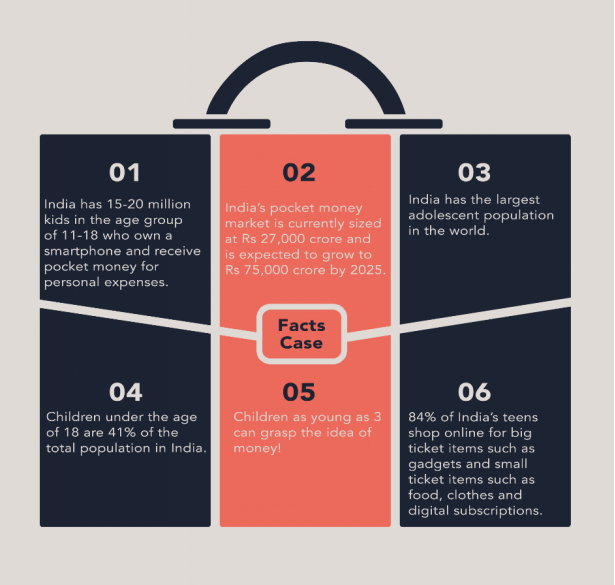Banking for teens; a new wave by Fintechs is all about tapping the untapped! With over 2000 Fintechs competing in the digital space, innovation in every segment seems inevitable. Earlier traditional banks had acknowledged this unpenetrated market of kids, teens and tweens as well. They introduced services such as junior accounts to serve the said market but were unable to bring technology and innovation to the equation. Parents had to manage all the banking operations for their kids giving a sense of dependency.
Here’s a fact case that showcases vital statistics-

- Leveraging the fact that India has 15-20 million kids in the age group of 11-18 who own a smartphone and receive pocket money for personal expenses, upstart Fyp rolled out a pocket money app and India’s first holographic card for teenagers.
- Junio, another initiative to serve the teenagers, provides users a bank issued card as well that works much as an adult plastic card.
- FamPay, a Bangalore based Fintech, provides teenagers lessons about money matters through gamification along with enabling them to make online and offline transactions independently.
- Upstart like YPay also provide cashback and rewards on transactions similar to adult reward system.
- Pencilton introduced the PencilCard, a RuPay debit card for teens across India that can be activated and managed via the Pencilton app.
Several fintechs are innovating this space by introducing ‘Banking for teens’ which offers ‘children centric’ products and services. They aim at allowing children to manage their funds while learning financial accountability and budgeting at a budding age. This will provide teenagers with financial literacy who otherwise have limited options to grasp financial-related concepts. Moreover, it will allow fintech to develop a market for themselves at an early stage.
Gen Z is the most tech-savvy and technology-driven generation, which is a stimulus for Fintechs. They specifically target individuals aged between 15-24. The AI-driven apps allow them to withdraw, deposit, transfer cash, net banking, UPI payments. These companies also provide teens with secured plastic cards that enable them to make online and offline payments without the need for an OTP. Moreover, they also incentivize by offering rewards and cashback, similar to classic credit and debit cards.
From a security perspective, parents can customize the usage and account threshold while receiving insights on expenditure. This provides parents the chance to teach their children money management while monitoring their expenditure.
Fintechs are introducing services that are enabling financial inclusion at multiple levels. Although young, children are the future of an economy and teaching them money matters at a young age seems to be a good bet than excluding them.
